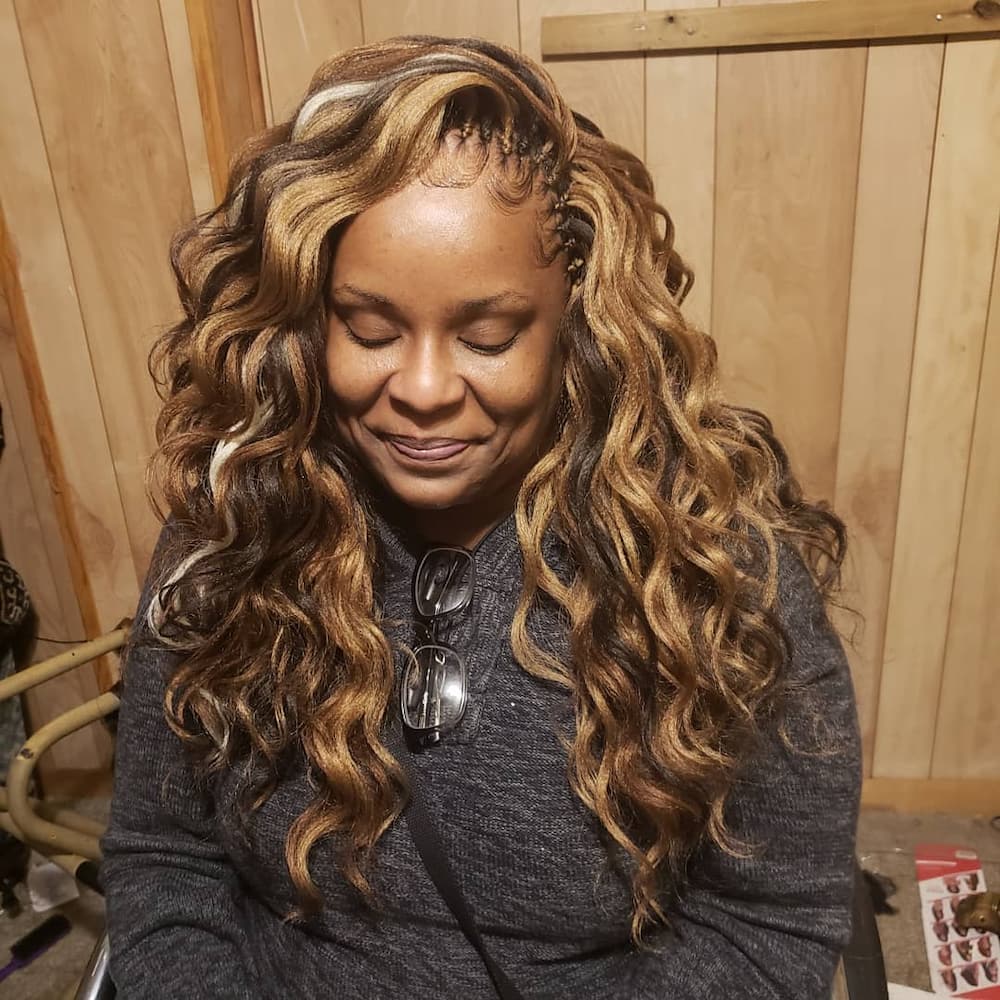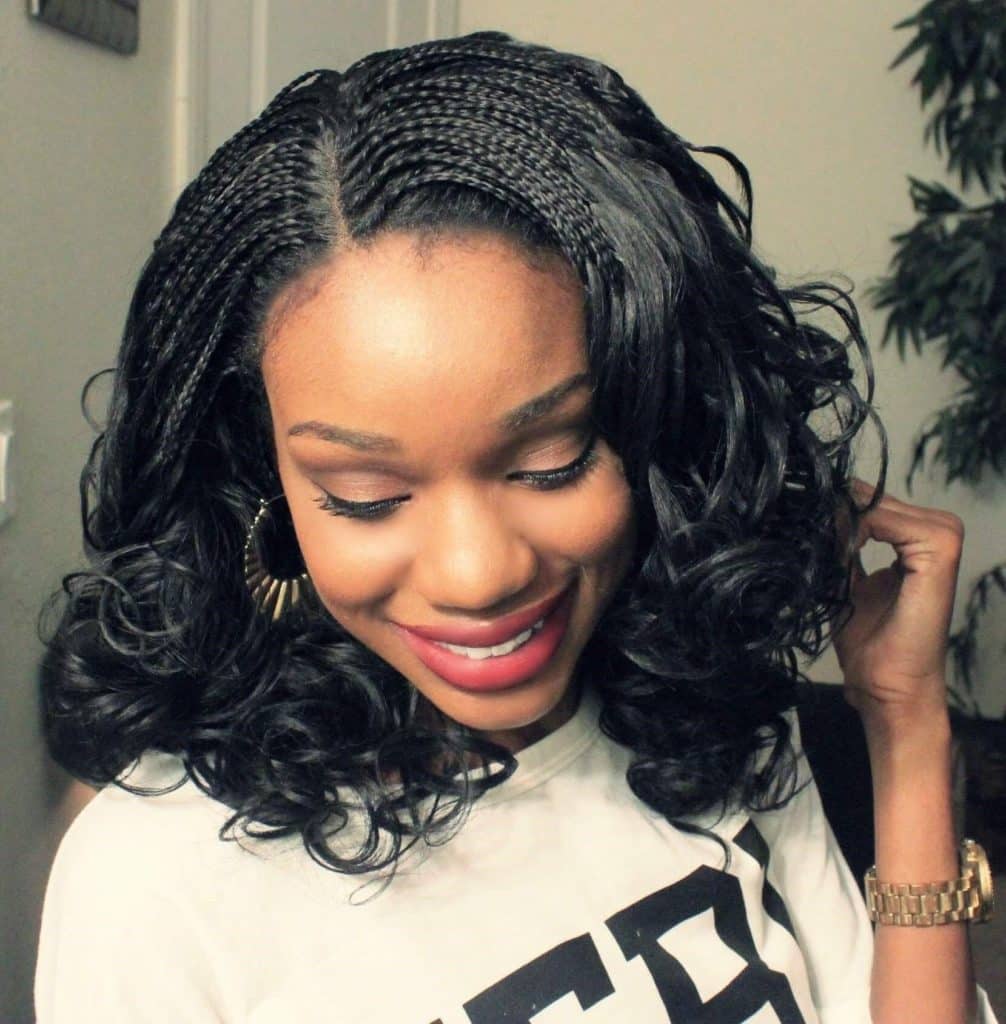Stunning Tree Braids: Styles & Tips!
Do you desire a hairstyle thats both protective and undeniably stylish? Tree braids, a versatile and beloved braiding technique, offer a compelling blend of beauty and practicality, making them a perennial favorite in the world of hairstyling. This method skillfully integrates extensions with your natural hair, creating a flowing, natural look thats as easy to maintain as it is eye-catching. But what exactly are tree braids, and why have they captivated so many for so long?
Tree braids are a unique braiding technique that involves braiding extensions into your natural hair, leaving the ends of the extensions free and flowing. The effect is a cascade of hair that resembles the texture and movement of naturally grown hair, hence the name. Unlike traditional box braids or cornrows, tree braids are designed to mimic a more natural look. This style allows for more versatility in styling and can be tailored to suit various hair types, textures, and lengths. They provide a protective style, shielding natural hair from environmental damage while offering a range of styling options. The technique involves braiding a portion of the extension into the natural hair near the scalp, and then allowing the remaining length of the extension to hang freely, giving the illusion of natural hair growth. This method creates a look that is often perceived as less "braided" and more flowing and natural. The braid is secured close to the scalp, while the rest of the hair is left loose. There is a lot of variation of the style, with some people preferring a more traditional look and others opting for more contemporary styles. With proper care, tree braids can last for several weeks, providing a stylish and low-maintenance option for those seeking to protect and enhance their natural hair.
| Feature | Details |
|---|---|
| Style Type | Protective hairstyle integrating extensions with natural hair. |
| Appearance | Mimics natural hair growth with free-flowing ends. |
| Technique | Braids extensions near the scalp and leaves the ends loose. |
| Maintenance | Generally low-maintenance; lasts several weeks with proper care. |
| Versatility | Suited for various hair types, textures, and lengths. |
| Protection | Shields natural hair from environmental damage. |
| Styling Options | Allows for a range of styles, including updos, ponytails, and more. |
| Longevity | Can last up to 6-8 weeks depending on care and hair growth. |
| Popularity | A perennial favorite due to its natural look and low maintenance. |
The genesis of tree braids, while not precisely documented, can be traced back to the ingenuity of African American hair stylists and their clients. The desire to protect natural hair while still achieving a look of flowing fullness and style fueled the development of this technique. It offered a compelling alternative to other braiding methods. Over time, the technique has been adapted and refined, becoming more sophisticated and adaptable to diverse hair types and preferences. The evolution has reflected the ongoing innovation within the Black hair community, consistently prioritizing both the health of the hair and the aesthetic appeal of the style.
The allure of tree braids stems from a combination of factors. Their ability to mimic natural hair texture is a key draw. They present a softer, less structured look than many other braiding styles, providing wearers with a greater degree of styling freedom. The versatility allows for a wide range of looks, from sleek and polished to voluminous and carefree. Beyond aesthetics, tree braids offer a significant advantage in terms of hair health. By encasing the natural hair, they protect it from the elements, reducing breakage and promoting growth. This protective quality is essential for anyone seeking to grow out their hair or minimize the damage caused by heat styling or chemical treatments. Moreover, tree braids are relatively low-maintenance. Unlike styles that require daily upkeep, tree braids can often be styled and forgotten, requiring only occasional washing and moisturizing to maintain their appearance and health.
The process of creating tree braids involves a series of deliberate steps that a skilled stylist meticulously follows. The process begins with thorough preparation. This includes washing, conditioning, and detangling the natural hair to ensure it is clean and manageable. Next, the hair is sectioned into small, even parts, determining the braid pattern. The braiding process itself is the heart of the technique. The stylist typically takes a small section of the natural hair and a piece of extension hair. Using a braiding technique, the stylist integrates the extension into the natural hair, braiding a small portion near the scalp to secure the extension. The remaining length of the extension is left unbraided, creating the free-flowing effect. This process is repeated throughout the hair, working from the scalp outwards. Once the braids are complete, the stylist may trim the ends to create a uniform and polished look. A final step might include applying a moisturizing product or serum to keep the braids looking fresh.
There are many variations of tree braids, allowing individuals to customize their style to their preferences. Some popular variations include the use of different extension materials, such as synthetic or human hair, each offering different textures and levels of realism. The size of the braids can also vary. Small, micro-braids create a more detailed and delicate look, while larger braids provide more volume and a bolder appearance. Another variation is the use of different braiding patterns, which determine the overall shape and flow of the style. You can choose from simple, all-over braids to more intricate and creative designs. The choice of style also depends on hair type, hair length, and the desired effect. Some stylists incorporate color into tree braids, by using colored extensions or dyeing the extensions. The possibilities are extensive, offering a personalized and versatile hairstyling experience.
Maintenance is crucial for extending the life and preserving the beauty of tree braids. Regular washing is essential to remove dirt, oil, and product buildup. However, over-washing can strip the hair of its natural oils, so balance is key. Washing every 1-2 weeks is usually sufficient. Use a sulfate-free shampoo to gently cleanse the hair and scalp. Dilute the shampoo with water before application. Moisturizing is also vital. Use a lightweight leave-in conditioner or hair oil to keep the braids hydrated and prevent dryness. Focus on the scalp to prevent itchiness. Wrapping the hair at night with a satin scarf or bonnet protects the braids from friction and breakage. Avoiding excessive heat styling is also key. If heat is necessary, use a heat protectant and apply low heat. Regularly trimming the ends of the loose hair will keep the style neat and tidy. By following these maintenance tips, one can maintain and even extend the lifespan of their tree braids, keeping them looking their best.
The cost of tree braids varies depending on several factors, including the experience of the stylist, the length and thickness of the hair, the type of extensions used, and the complexity of the style. More experienced stylists typically charge higher rates, reflecting their expertise. The length and thickness of the hair directly affect the amount of time and materials needed. Naturally thick or long hair may require more extensions and more time to braid, increasing the cost. The type of extension material also influences the price. Human hair extensions are often more expensive than synthetic ones. The complexity of the style also has an impact. Intricate braiding patterns or styles that incorporate color typically require more time and skill, thus affecting the cost. On average, the cost of tree braids can range from $150 to $400 or more. Be sure to inquire about pricing and any extra fees before making an appointment.
Finding a skilled and experienced stylist is important. Start by asking for recommendations from friends, family, or online reviews. Look for stylists who specialize in braiding and have experience with tree braids. Examine their previous work. A portfolio of photos showcasing their skills and styles will provide insight into their abilities. Consider the stylists knowledge of hair types and textures. They should be able to offer advice and customization options tailored to your specific hair. Check the stylist's reputation. Look for reviews or testimonials that highlight their professionalism, skill, and customer service. A consultation is also a crucial step. This provides a chance to discuss your desired style, assess your hairs condition, and evaluate the stylist's suitability. A skilled stylist should listen carefully to your needs and be able to answer your questions. This ensures a satisfactory outcome.
Tree braids have become a popular hairstyle because of their adaptability and ease of use. They provide a compelling mix of protection and styling options. This is why they continue to captivate people looking for a beautiful and easy style. Their natural appearance and ability to protect the hair make them a favored choice. With their versatility, various styling alternatives, and relatively low maintenance, tree braids are still a favorite among hairstyling aficionados, remaining a timeless option. Their continued popularity is a testament to their effectiveness and the enduring appeal of a style that marries beauty, protection, and convenience.


